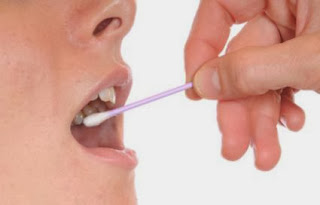Occlusion is the manner in which upper (maxillary) and lower (mandibular) teeth contact and rest on one another when they are brought together to close the mouth or chew, commonly called bite.
Dynamic occlusion, or articulation, is the occlusion when there is jaw movement. This includes when you are eating. Static occlusion is occlusion when the jaw is closed and is not moving.
When there is improper contact resulting in misalignment, it is called malocclusion. Malocclusion is associated with a variety of problems.
Both genetic variation and environmental factors affect occlusion and can result in malocclusion, since bone structure and the size, shape, and location of teeth vary between people. Tumors, impacted teeth, pacifier use, improperly fitted oral appliances, wear/abrasion, restorative treatments (such as braces, fillings, invisalign, and crowns), breathing though the mouth, biting on nails or other objects, thumb sucking, and injury can also lead to malocclusion.
As a person ages and develops, their occlusion may change. Remember that many infants are born without teeth, baby teeth erupt and are gradually replaced by permanent teeth. All teeth are subject to wear and infection. People may also have supernumerary (more than a normal number of) teeth, may be missing teeth, or may have large, small, or loose teeth, which may lead to malocclusion.
Malocclusion should be treated by a dentist. A dentist will be able to evaluate a patient and check for malocclusion.
Dynamic occlusion, or articulation, is the occlusion when there is jaw movement. This includes when you are eating. Static occlusion is occlusion when the jaw is closed and is not moving.
 |
| Dynamic Occlusion |
 |
| Static Occlusion |
When there is improper contact resulting in misalignment, it is called malocclusion. Malocclusion is associated with a variety of problems.
Both genetic variation and environmental factors affect occlusion and can result in malocclusion, since bone structure and the size, shape, and location of teeth vary between people. Tumors, impacted teeth, pacifier use, improperly fitted oral appliances, wear/abrasion, restorative treatments (such as braces, fillings, invisalign, and crowns), breathing though the mouth, biting on nails or other objects, thumb sucking, and injury can also lead to malocclusion.
As a person ages and develops, their occlusion may change. Remember that many infants are born without teeth, baby teeth erupt and are gradually replaced by permanent teeth. All teeth are subject to wear and infection. People may also have supernumerary (more than a normal number of) teeth, may be missing teeth, or may have large, small, or loose teeth, which may lead to malocclusion.
Malocclusion should be treated by a dentist. A dentist will be able to evaluate a patient and check for malocclusion.



















































